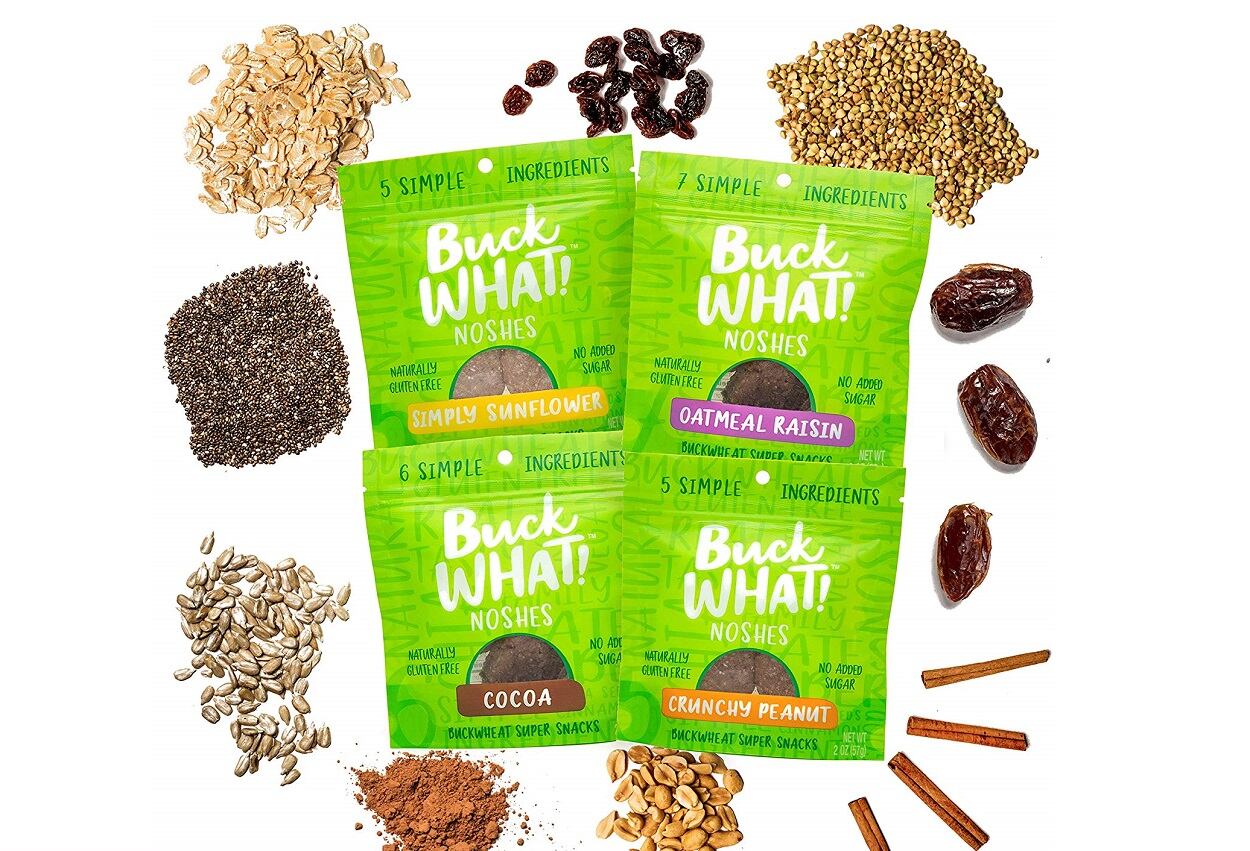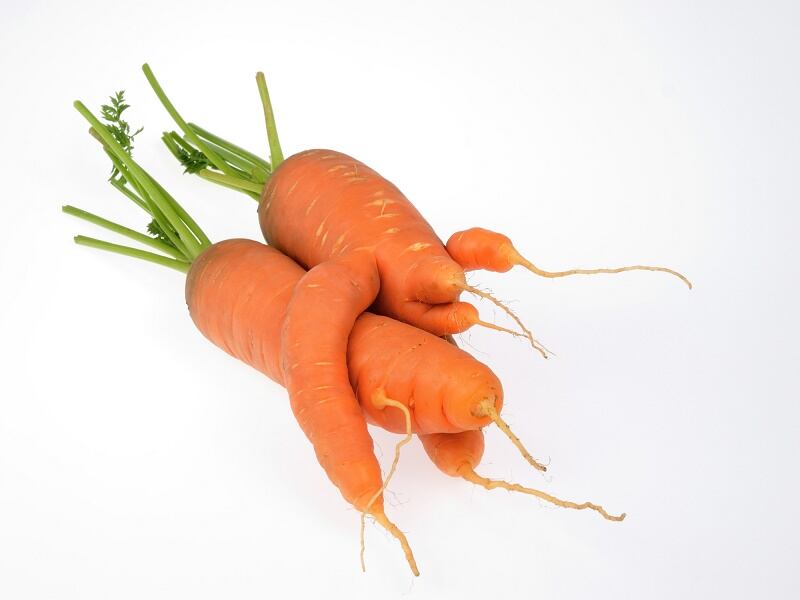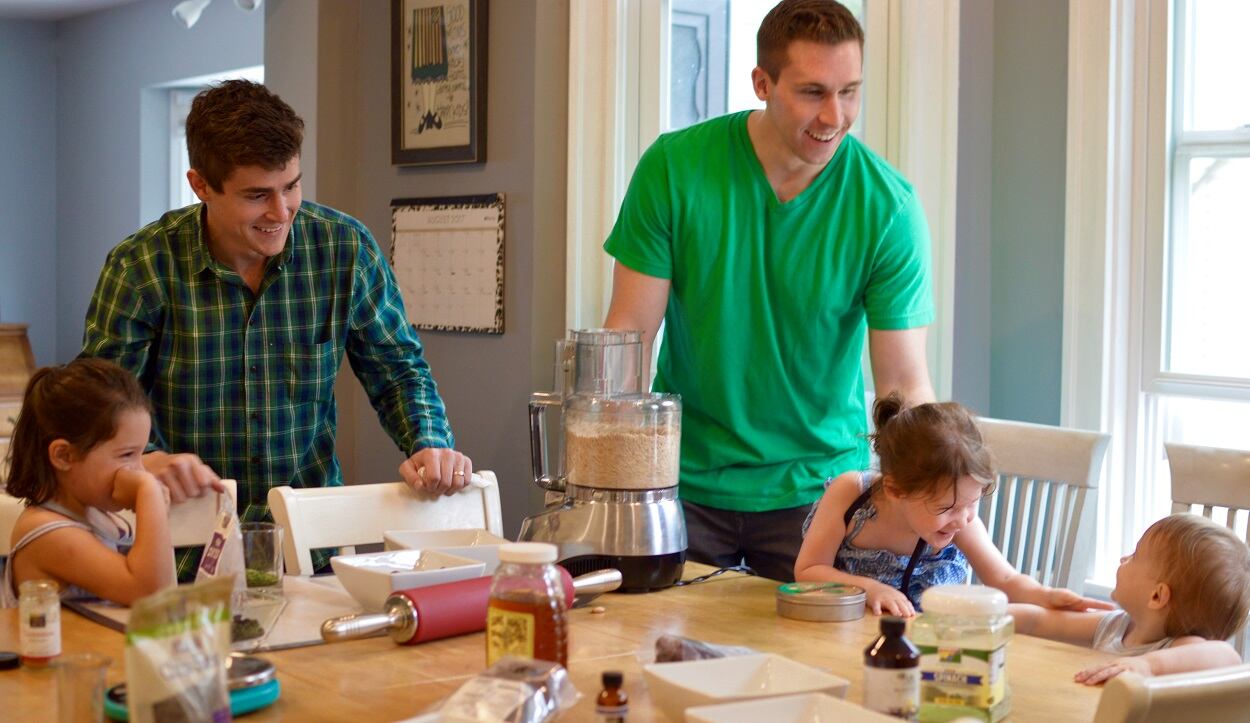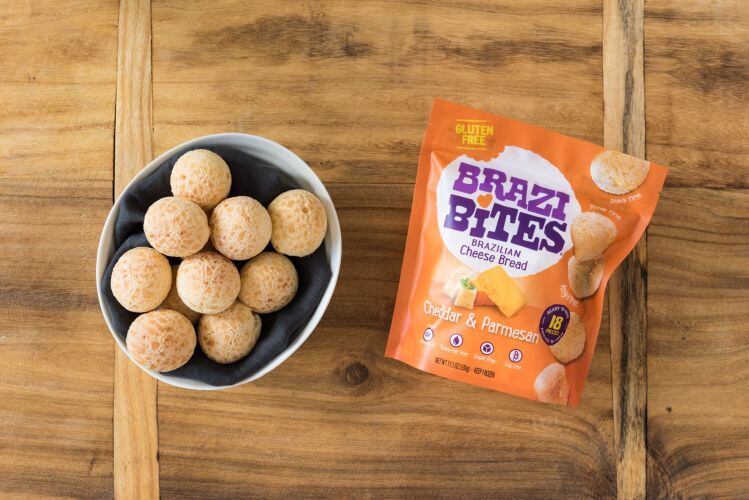Founder Leeann Rybakov grew up eating buckwheat prepared by her mother in Kiev, Ukraine, where it was a staple food item.
“When times were hard people really relied on this ingredient because it just covered all the nutritional bases: It’s a complete plant-based protein, it’s a great source of fiber, it really keeps you feeling full, it’s got tons of minerals,” Rybakov told FoodNavigator-USA.
Rybakov was originally experimenting with using buckwheat as a base for bowls to sell to retailers, but switched to handheld nosh bites that she had been making for herself as an on-the-go snack, which were already a hit with friends and family.
BuckWHAT! noshes are made from buckwheat, chia seeds (acting as a binder and source of omega 3s), cinnamon, and dates (for sweetness).
“I wanted to have every ingredient on my packaging to be something most people most likely have in their pantry, and I didn’t want any added sugar,” Rybakov said.
BuckWHAT! noshes come in four varieties: cocoa, crunchy peanut, oatmeal raisin, and simply sunflower, packaged in bright green stand-up pouches.
Rybakov added that this is snack intended to be enjoyed by the entire family.
“We all want to take the convenient route and my goal is to make this a family snack. Not just a kid snack, not just an adult snack, but something everyone can have together,” she said.
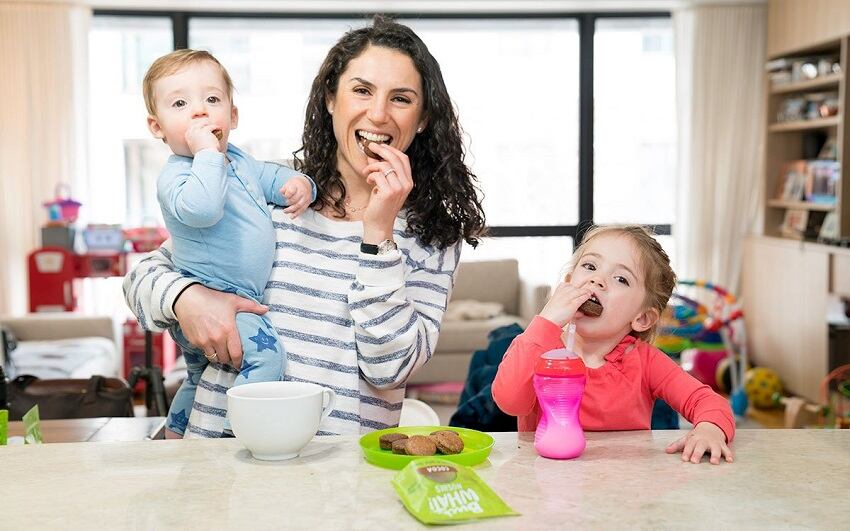
“I’ve seen kids look at it as cookies and I don’t know if they’d look at an energy bar the same way.”
‘I plan to be the buckwheat queen at some point’
When quinoa busted onto the natural foods scene, it spurred consumers to take a closer look at whole grains and sparked an interest in other varieties.
“If you really think about before quinoa, there really wasn’t much out there,” Rybakov said. “It opened up the door for people to think about, ‘What’s millet?’, ‘What’s sorghum?’”
According to Rybakov, buckwheat is poised to be the “next big thing” because of its nutrient density – one cup of cooked buckwheat has roughly 6 grams of protein, 5 grams of fiber, and contains essential minerals such as manganese (86mg) and magnesium (86mg) – and a sustainable growing profile.
“It can grow virtually anywhere,” said Rybakov.
Buckwheat is quick-growing crop that thrives in poor ‘low-fertility’ soils, according to USDA-funded SARE (Sustainable Agriculture Research & Education).
However, it will take some consumer education particularly demonstrating to consumers that there is no wheat in buckwheat, added Rybakov.
“‘Buckwheat’ is a little bit of misnomer because it’s gluten free. I think it’ll take a little bit of a time for people to become more and more familiar with it, and it’ll take a lot of marketing to bring that to the surface,” she said.
“I plan to be the buckwheat queen at some point.”
‘I have really big goals for 2019’
As a self-funded startup, Rybakov has had to be strategic in where she spends her time, energy, and most importantly, cash.
BuckWHAT! products have grown from a weekend farmers market to roughly 80 stores in the New York metro area, mainly in independent, specialty, and gourmet stores.
Rybakov hired a consultant to assist in rebranding the company’s packaging after entering its first Whole Foods account and narrow down the portfolio from granola, bars, and
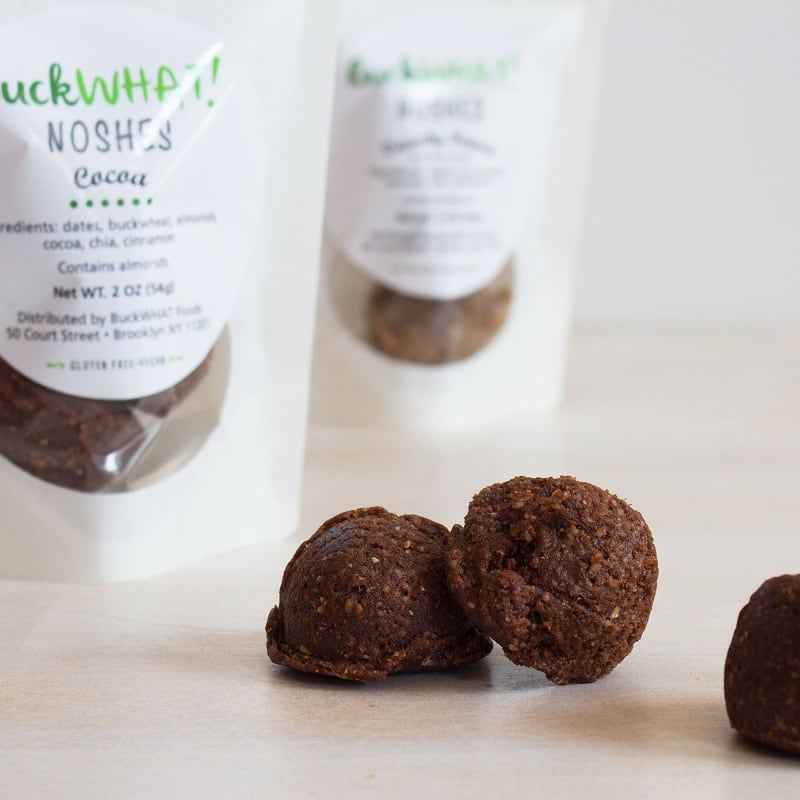
noshes, to just noshes, as well as fine-tune the product messaging.
“When it’s your brand you want to tell everyone every detail about it, but they really made me focus down on what is the most important part,” Rybakov said.
The most important claim to get across to consumers (on the front of the packaging) was that it was gluten-free, no added sugar, and that it was just a few ingredients (5-7 based on the flavor).
Other attributes such as ‘vegan’ and non-GMO can be found on the back of the pouch.
Now that the company entered a co-manufacturing space in October, Rybakov has time to focus on growing the brand even further.
“I have really big goals for 2019. I want to do a first round of funding. I’m hoping to raise capital in the next year in order to grow into 500 stores in 2019 as well as increase my online presence,” she said.

